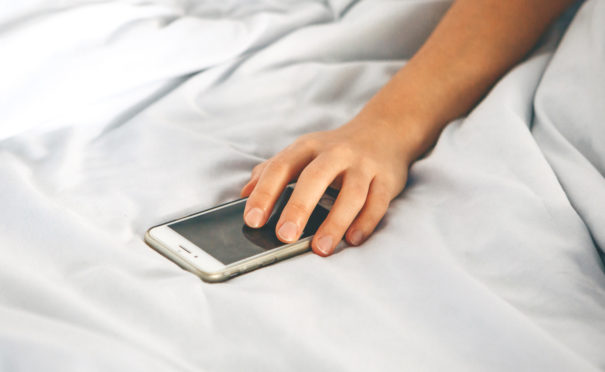
Almost a third of young people experience sleeping difficulties, a number which researchers said has increased from around a quarter in four years.
A study of school-age children carried out in 2018 found just over a third (35%) said they suffer multiple health complaints every week due to sleeping difficulties, with feeling nervous and irritable among the most common complaints.
Sleep problems among adolescents have been linked to electronic devices and social media in other studies.
The new 2018 Health Behaviour in School-aged Children (HBSC) study found more than nine in 10 (92%) of 15-year-olds keep their smartphones in their bedroom at night, and nearly all (95%) young people said they own a smartphone with a connection to the internet.
Researchers also found under one in five (17%) adolescents in Scotland meet the current recommendations of 60 minutes a day of moderate-to-vigorous physical activity.
The proportion of young people playing computer games on weekdays has increased “substantially” since 2006, from 22% to 42% among girls and from 53% to 71% among boys.
Dr Jo Inchley, from the MRC/CSO Social and Public Health Sciences Unit at the University of Glasgow and lead author of the study, said: “We’ve seen significant improvements in recent years in areas such as substance use and eating behaviours.
“But at the same time, new challenges such as social media are increasingly impacting on how young people live their lives and these can have a significant impact on their wellbeing.
“This report helps us to better understand the challenges young people face and the areas where more support and investment is needed.”
The study found 85% of young people reported high life satisfaction in 2018, while almost one in five adolescents rated their health as excellent.
However researchers found the proportion of young people reporting sleep difficulties more than once a week increased from 23% in 2014 to 30% in 2018.
On weekdays the average length of sleep was 8.3 hours for 13-year-olds and 7.8 hours for 15-year-olds.
The recommended sleep for teenagers is eight to 10 hours each night.
Researchers found just over a third (37%) of adolescents were classified as having low mood (33% boys, 41% girls) and 14% were at risk of depression (11% boys, 17% girls).
Dr Inchley said: “The declines in mental health and increase in sleep difficulties are concerning.
“There’s been a small but steady increase in the proportion of girls taking part in physical activity in their free time but overall levels are still very low and screen time has been increasing at a much faster rate.”
The study, which involved 5,286 pupils, covered areas such as sleeping habits, time spent online, physical activity and school and home life.
Data was collected from surveys with 11, 13 and 15-year-olds in Scotland.
Vigorous physical activity was found to be higher among boys than girls.
Just over a third of adolescents reported eating fruit (35%) or vegetables (36%) every day.
Dr Rory Mitchell, public health intelligence principal at NHS Health Scotland, which funded the study, said: “This report highlights some positive trends as well as ongoing challenges.
“The data shows that children from wealthier families tend to report better health and wellbeing than those from poorer families.
“This highlights the need for a continued focus on tackling health inequalities in Scotland.”

Enjoy the convenience of having The Sunday Post delivered as a digital ePaper straight to your smartphone, tablet or computer.
Subscribe for only £5.49 a month and enjoy all the benefits of the printed paper as a digital replica.
Subscribe